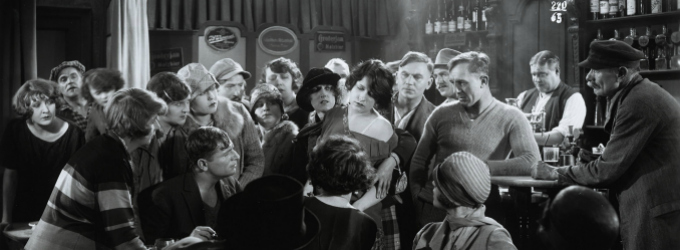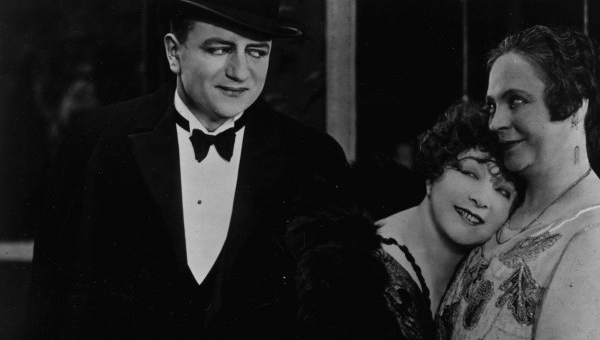
Playing at this year’s Cambridge Film Festival are a series of films from the German director Gerhard Lamprecht. Toby Miller spoke to BFI silent cinema curator Bryony Dixon on the films that played at this years festival. Bryony has also recently written on Gerhard Lamprecht in her article Primal screen: The world of silent cinema in the September issue of Sight & Sound.
Toby Miller: The four Lamprecht films that are screening over the Cambridge Film Festival cover the period from 1925 to 1928, when his work has been described as “elegant realism”. But how does his work of the time sit amongst his peers. He was shooting on the streets, he was using amateur actors, he wasn’t studio bound. Was that at all unusual?
Bryony Dixon: In the 1920’s Germany was well ahead in terms of having a centralised studio system, they had the space, they had the lighting, everything was highly capitalised. Lamprecht was part of that, his films were very professional, very well financed – which is why they look so gorgeous. They were high production value films. Lamprecht wasn’t a revolutionary or a political activist. Regarding his filmmaking style, the phrase “elegant realism” is bang on the money. He liked to shoot with a high degree of exterior work, paired with high quality studio work. His style is very pared back, which was typical of the mid to late 1920’s: you can find the same type of style in France and America and the UK. For a short while there seemed a global consensus of style and Lamprecht was a very good proponent of that. If you compare him to his comtempories, GW Pabst or Fritz Lang for example, he’s certainly on a par with those directors.
For a short while there seemed a global consensus of style and Lamprecht was a very good proponent of that.
TM: You’ve just mentioned directors who were visual innovators, was Lamprecht?
BD: Not a innovator in technical terms, but he understood profoundly his art and craft. I think where he was innovative was in the subject matters that he picked. The types of drama that he chooses to make, about the working class of Berlin about social problems, about the extremes of poverty – these were very much the concern of Germany at the time. The country had come out of the first world war into very rapid industrialisation. Inflation had wiped out saving and lots of people were in terrible situations; this is the world Lamprecht chose to focus on. He’s saying, this is the situation, understand why these people do what they do and try and understand.

TM: What effect did his social problem films have at the time? Did they instigate any form of change or were they just seen by the chattering classes and had no effect, in the manner of some Ken Loach films now – seen by the wrong sort of audience to get the message across?
BD: Lamprecht is slightly preaching to the converted. The more revolutionary films of the time got more attention, because they offered stronger propaganda and were more outrageous. But Lamprecht’s films were very popular. I do get the sense they were seen by the type of people who already would have had sympathy for those struggling in poverty.
TM: The four films screened at the festival only cover his career from 1925 to 1928, but that’s only tiny selection of his work, he worked throughout the Weimar Republic, he worked right through the Second World War and for many, many years after. How important is his body of work as a barometer of German history?
BD: He’s a very good barometer for the ebb and flow of the changes in German cinema. He arrived after Expressionism, but he does take German cinema in the direction it is going to go – into social realism, and unlike many of his comtempories he doesn’t leave during the war. The thing to remember about Lamprecht is that he is a Berliner to his core. This is his home, the only thing that he interested in and concerned with; all his great films are about Berlin. So when the Nazis come to power he keeps his head down, carries on working and makes safe, uncontroversial films until after the war, when he picks up again with his social condition dramas. After the war he makes what they call a “rubble film”, a little sub genre of films which are all about what it is like to live in the ruins of Berlin after the Second World War. So he lies low. And I don’t believe anybody ever accused him of being a collaborator, or of nazism in any way, which is to his credit; people believe he had that kind of integrity.
After the war he makes what they call a “rubble film”, a little sub genre of films which are all about what it is like to live in the ruins of Berlin after the Second World War.
TM: Would you be able to say a little about the four films that are screening over the festival?
BD: All four of these films are little masterworks in their own right. They all share similar subject matter, in that they’re all dealing with the poorer parts of Berlin: the misery, the vice, the poverty and the alcohol, the thing he called the “fifth estate”: the people who are completely trapped in poverty. But each of the four films deals with a complete different type of person. UNDER THE LANTERN is a very hard hitting drama about a young girl who hopes for a singing career but gets drawn down and exploited. PEOPLE AMONG EACH OTHER is an ensemble piece set around a boarding house. You have all these different characters and all their different stories. And that’s a slightly happier film, dealing with people who are trying to help each other rise out of this dreadful situation. Lamprecht believed that the main source of redemption was through the small acts of kindness of other people, and this films shows that.

All four of these films are little masterworks in their own right[, but] each of the four films deals with a complete different type of person.
CHILDREN OF NO IMPORTANCE is the most difficult to watch. It deals with child abuse, partly through poverty and partly through characters that just not nice. It is a difficult to watch, but well worth it; it shows that issues that trouble us now were as much of a problem almost 90 years ago. It’s a fabulous film, as relevant now as it was then. And then there is SLUMS OF BERLIN, another tour de force. Rather unusually it’s about a middle class character, who commits perjury in a court case and sent to prison. When he’s released he finds it almost impossible to get back on his feet. He’s disowned by his family. He falls down and down into this “fifth estate”.
TM: There’s no doubt these four films are important social documents, but are they also vital works of cinema?
BD: Absolutely. It does sound as if this is a group of “it’s grim up north” style films, but that’s certainly not the effect you have whilst watching them. They are very well made films, little masterpieces; they are important films, grown up films that will tell you something vital about the human condition. And they’re timeless, many of them are saying something as important now as it was when they were made. And there is almost always a hopeful ending to a Lamprecht film. There is always hope, that this is a situation about which people can do something.

